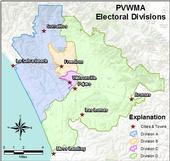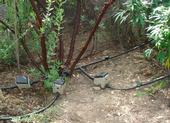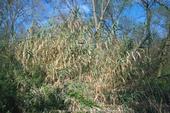- Author: Jennifer Rindahl

People, animals and plants all need water to survive, yet we have less than 1 percent of the earth's water available for our use. And our water supply is diminishing. This year's record California drought conditions mean that now, more than ever, every drop counts.
Californians currently use an average of 196 gallons of water per person per day, including all business operations other than agriculture. The average household uses 30 percent of its water outdoors for landscaping and gardening. Inside the home, the majority is used in the bathroom. Just shortening your daily shower by a minute or two can save as much as 700 gallons of water every month!
Did you know that if everyone in the state reduced her or his water...
- Author: Pamela Kan-Rice

In the Pajaro Valley, an agricultural region in Monterey County, residents are being proactive about water conservation policies and seeking ways to save water.
Groundwater makes up roughly 90 percent of the water delivered by Pajaro Valley’s Water Management Agency (PVWMA). There is a current overdraft of groundwater in the aquifers of this region, which calls for immediate action to protect their water source. Historically, the amount of groundwater in the aquifer was above sea level so the amount of salt water in the freshwater aquifer was kept at bay. Removing too much water from the ground at a faster rate than it is being replenished has caused seawater from the Pacific Ocean to enter the aquifer as the water...
- Author: Ann Brody Guy
- Adapted from an article by: Sarah Yang

The competition between farmers and fish for precious water in California is intensifying in wine country, say biologists at the University of California, Berkeley.
A recently published study links higher death rates for threatened juvenile steelhead trout with low water levels in the summer and the amount of vineyard acreage upstream. Like salmon, steelhead trout migrate from freshwater streams to the ocean before returning to their birthplace to spawn. Steelhead trout in Southern California and the upper Columbia River are endangered, and several other populations, including those in Northern California, are...
- Author: Brenda Dawson

While the legality of California’s medical marijuana dispensaries is being debated in courtrooms, a UC Cooperative Extension forestry and wildlands ecology advisor says there are a number of issues related to the unregulated land-use practices of illicit cannabis growing that have not been addressed.
“As a forest ecologist, I spend a lot of time outdoors, and I talk to thousands of people every year about forest-related subject matter,” says Greg Giusti. “And you can’t talk to anybody today on the North Coast without the topic of cannabis growing and cannabis impacts on land coming up.”
In Lake and Mendocino counties, Giusti performs research and shares...
- Author: Chris M. Webb

In the early 1800s, European immigrants introduced the fast-growing giant reed arundo (Arundo donax) into California to use the canes for musical instruments. The plants were also used for erosion control and the reeds used for thatched roofing. However, it has since naturalized and become a serious pest in the state's natural waterways.
Arundo can grow at a rate of four inches per day and can reach heights of 30 feet. It reproduces and spreads when sections of the stem or root break off and float downstream.
Dense stands of arundo displace native riparian species. The plant requires a significant amount of water, reducing fish, wildlife and people. In addition, clumps of arundo and the soil around their roots...



